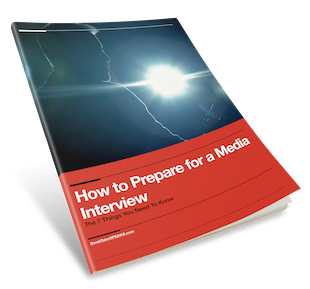The path between a great idea and a great broadcast ready commercial is paved with excellent copy writing. Unfortunately, often times and at no fault of the copy writer, the message gets obscured because of the too-many-cooks principle.
If it was up to copy writers alone all commercials would be divine inspirations that communicate an idea clearly and effectively. However as you know there’s more to the process including well intentioned sales people, the clients themselves and don’t forget the client’s knowledgable hairdresser who believes the product name should be said at least 6 times in a :30 second commercial to be most effective!
If you’re a commercial copy writer and you’re looking for ammunition to pull out when all of the above “cooks” start trying to help make the commercial better, arm yourself with my 5 truths about commercial copy writing.
-
COMMERCIALS ARE MEANT TO SELL, NOT ENTERTAIN
A successful commercial is not one that wins awards for it’s creativity or that’s funny, it’s one that motivates the listener to act. To go out and buy the product, period.
This should be your main goal as soon as you sit down to write and if it’s not you’re being unfaithful to the client’s needs.
-
LESS IS MORE
It’s not just a cliché. Retailers who buy commercial airtime sometimes think that they need to fill it with as much information about their product as they can possible squeeze in. You’ll need to explain to them that this approach works against the purpose of the commercial…stimulating an emotional response which then motivates the audience to act.
My friend Nick Michaels takes it a step further when he says, “The more words you use the LESS the listener gets to actively participate. Does your message allow for the act of discovery or is the listener a VICTIM of the message?”
The white space you leave between the words is where the audience gets to participate through introspection and inadvertently internalizes the message you’re trying to convey.
-
ADVERTISING SOLVES PROBLEMS
Let’s be honest, people don’t care about the product, they care about what the product can do for them.
When you’re tasked with writing a commercial the first question you need to ask yourself is “what problem does it solve?” and then build a message that conveys that information to the listener in a meaningful way.
It’s a 3 step process:
Step 1 – Identify the need that will be filled or problem that will be solved
Step 2 – Make the listener aware of that need or problem
Step 3 – Show them how the product will solve that need or problem
-
ONE CORE MESSAGE IS ALL YOU NEED
More today than at any other time, your audience is busy living their lives and will only respond to a simple, crystal clear message that they can relate to.
If in your creative meeting you conclude that XYZ Money Lenders ‘will solve your money problems’ make that your core message and build the commercial backwards from there. Your core message is the bullseye of the entire commercial and the fact that their lineups are short, their staff is friendly or that they have 18 convenient locations, is not. Anything that is outside of your target will only confuse the message.
If the client insists on mentioning more than one core message suggest a separate commercial for each of them.
-
RADIO IS A VISUAL MEDIUM
I’ve spent more years working in radio than in television but the truth is that building a picture in the mind of the listener and igniting introspection, is at the core of radio’s success. This is thoroughly explained in an article titled Visual Imagery: Applications to Advertising on the Association for Consumer Research website (quoted below).
“[Mental] imagery may prove to be the primary principle for the psychology of learning.” – John R. Rossiter, Columbia University
From a practical (ie. budgetary) standpoint when you’re writing a radio commercial vs. TV commercial you have much more freedom to create than in TV. When you’re writing for radio use the medium to it’s fullest potential.
Conclusion: Commercial copy writing isn’t a lost art but it does sometimes get overlooked in the fast paced, day-to-day operations of connecting clients to consumers. I hope this list helps you do that in a way that benefits both you and your clients.
What would you add to my list? Leave your thoughts or commercial copy writing truths in the comment field below.



Recent Comments